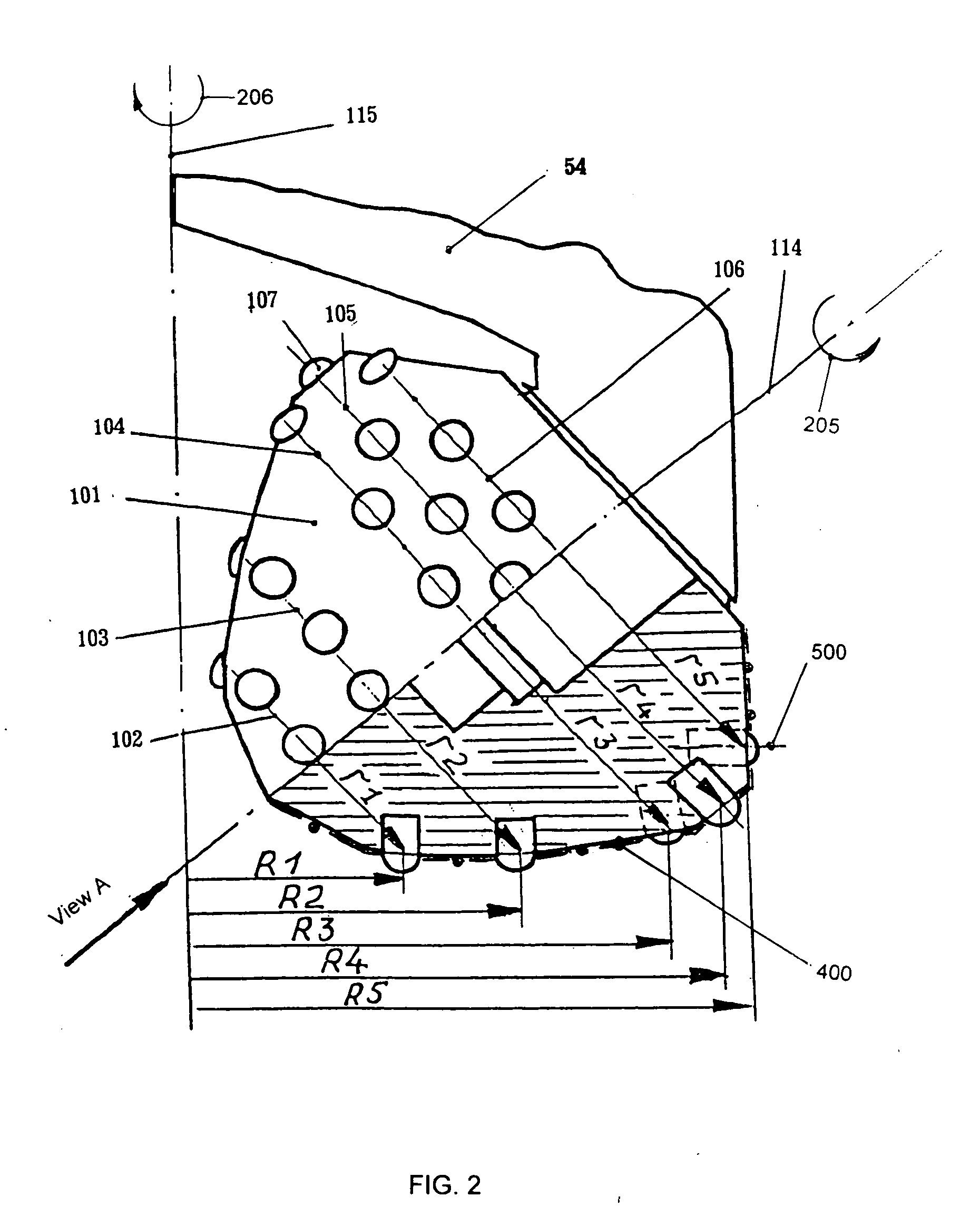Anti-tracking earth boring bit with selected varied pitch for overbreak optimization and vibration reduction
a technology of over-break optimization and anti-tracking, applied in the field of drill bits, can solve the problems of remaining to be solved, loss of drilling efficiency, and increased wear of the bi
- Summary
- Abstract
- Description
- Claims
- Application Information
AI Technical Summary
Benefits of technology
Problems solved by technology
Method used
Image
Examples
Embodiment Construction
[0032] Referring now to the Figures, and specifically to FIG. 1, a conventional rolling cutter (also called rolling-cone or three-cone) drill bit 50 conventionally used for drilling a bore in an earthen formation is illustrated. Bit 50 is typical of those contemplated by the present invention. Bit 50 comprises a bit body 51 that is threaded at its upper extent 52 for connection into a drill string. Bit 50 optionally may be provided with a lubricant compensator 53. A nozzle 55 is provided in bit body 51 to cool and lubricate the drill bit during drilling. Bearing pins or arms 54 extend from bit body in a cantilevered, downwardly depending fashion. At least one cutter 101 is mounted on bit arm 54 and is carried for rotation by each section of bit body with a plurality of cutting elements 107 thereon arranged in generally circumferential rows. Tungsten-carbide inserts 107 are secured by interference fit in holes or apertures formed in cutters 101 to define the cutting elements. The cut...
PUM
 Login to View More
Login to View More Abstract
Description
Claims
Application Information
 Login to View More
Login to View More - R&D
- Intellectual Property
- Life Sciences
- Materials
- Tech Scout
- Unparalleled Data Quality
- Higher Quality Content
- 60% Fewer Hallucinations
Browse by: Latest US Patents, China's latest patents, Technical Efficacy Thesaurus, Application Domain, Technology Topic, Popular Technical Reports.
© 2025 PatSnap. All rights reserved.Legal|Privacy policy|Modern Slavery Act Transparency Statement|Sitemap|About US| Contact US: help@patsnap.com



